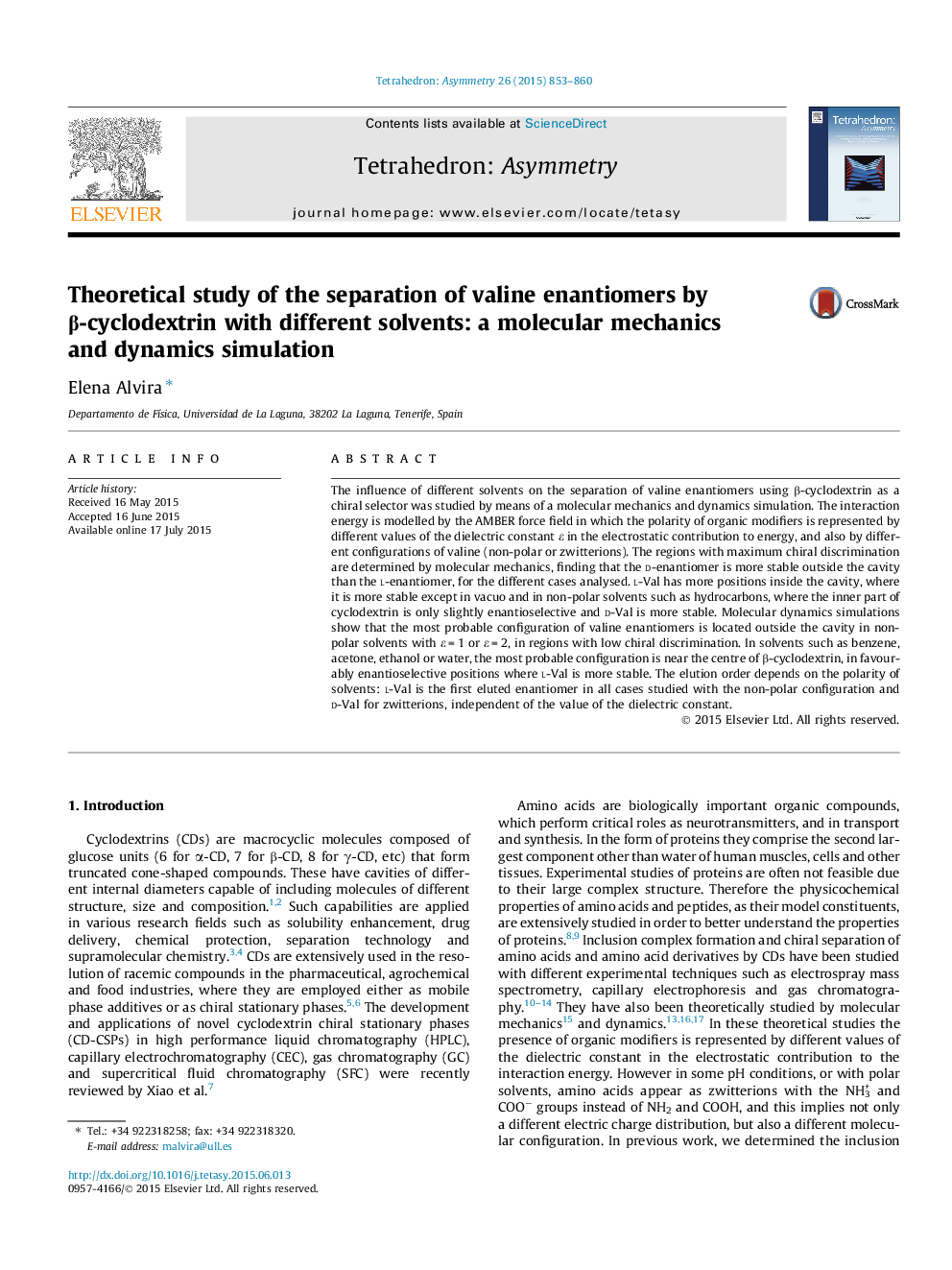| Article ID | Journal | Published Year | Pages | File Type |
|---|---|---|---|---|
| 1345399 | Tetrahedron: Asymmetry | 2015 | 8 Pages |
The influence of different solvents on the separation of valine enantiomers using β-cyclodextrin as a chiral selector was studied by means of a molecular mechanics and dynamics simulation. The interaction energy is modelled by the AMBER force field in which the polarity of organic modifiers is represented by different values of the dielectric constant ε in the electrostatic contribution to energy, and also by different configurations of valine (non-polar or zwitterions). The regions with maximum chiral discrimination are determined by molecular mechanics, finding that the d-enantiomer is more stable outside the cavity than the l-enantiomer, for the different cases analysed. l-Val has more positions inside the cavity, where it is more stable except in vacuo and in non-polar solvents such as hydrocarbons, where the inner part of cyclodextrin is only slightly enantioselective and d-Val is more stable. Molecular dynamics simulations show that the most probable configuration of valine enantiomers is located outside the cavity in non-polar solvents with ε = 1 or ε = 2, in regions with low chiral discrimination. In solvents such as benzene, acetone, ethanol or water, the most probable configuration is near the centre of β-cyclodextrin, in favourably enantioselective positions where l-Val is more stable. The elution order depends on the polarity of solvents: l-Val is the first eluted enantiomer in all cases studied with the non-polar configuration and d-Val for zwitterions, independent of the value of the dielectric constant.
Graphical abstractFigure optionsDownload full-size imageDownload as PowerPoint slide
